In order to generate a more inclusive dataset of Pseudomonas genes mapped to putative in-paralogs and putative orthologs in other Pseudomonas species/strains, we developed a Pseudomonas Orthologous Groups classification system.
To generate ortholog groups, pair-wise DIAMOND searches were run on all genomes in the database to find reciprocal best hits (RBHs) for each gene. These analyses often resulted in multiple candidate genes for RBH status, which were narrowed down by examining the similarity between the query's flanking genes and the hit's flanking genes. If two candidate genes were directly adjacent, they where both accepted as RBHs that involve putative in-parology.
Pairwise intra-genome DIAMOND searches were also performed to acquire in-paralog information (i.e. gene duplications occurring after species divergence). If two genes in one genome were reciprocally more similar to each other than to any gene in the other genomes, the two genes were designated putative in-paralogs. Ortholog groups are built by starting with a seed gene and then adding all genes to which there is a RBH or in-paralog relationship.
Every new gene added to an ortholog group was then treated as a seed gene and the addition process was repeated until all qualifying genes had been added. The result was the development of orthologous groups, specifically generated for Pseudomonas species genomes, which can be used to sort search results.
Pseudomonas Ortholog Group POG000034
| Strain | Locus Tag | Description | Same-Strain Members | Fragment ? | |
|---|---|---|---|---|---|
| Pseudomonas syringae pv. syringae B301D-R | PSSB301D_RS05820 |
LuxR family transcriptional regulator
|
1 member |

|
|
| Pseudomonas syringae pv. syringae B64 | PssB64_1969 |
LuxR family transcriptional regulator
|
1 member |

|
|
| Pseudomonas syringae pv. syringae B728a (Feil et al., 2005) | Psyr_3890 |
LuxR response regulator receiver
|
1 member |

|
|
| Pseudomonas syringae pv. syringae HS191 - Assembly GCF_000988395.1 | PSYRH_RS06760 |
LuxR family transcriptional regulator
|
1 member |

|
|
| Pseudomonas syringae pv. syringae SM | PssSM_3942 |
LuxR family transcriptional regulator
|
1 member |

|
|
| Pseudomonas syringae pv. tomato NYS-T1 | NB04_RS07965 |
LuxR family transcriptional regulator
|
1 member |
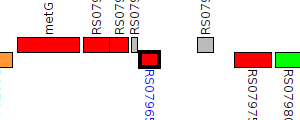
|
|
| Pseudomonas syringae UB0390 | IV03_RS06155 |
LuxR family transcriptional regulator
|
1 member |
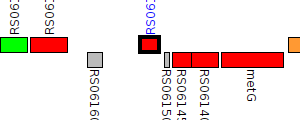
|
|
| Pseudomonas taetrolens DSM 21104 | TU78_RS01250 |
LuxR family transcriptional regulator
|
1 member |
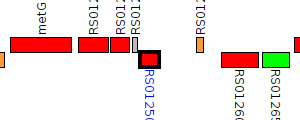
|
|
| Pseudomonas taiwanensis DSM 21245 | H620_RS0113130 |
LuxR family transcriptional regulator
|
2 same-strain members: H620_RS0113130 H620_RS0118025 |

|
|
| Pseudomonas taiwanensis DSM 21245 | H620_RS0118025 |
two component LuxR family transcriptional regulator
|
2 same-strain members: H620_RS0113130 H620_RS0118025 |
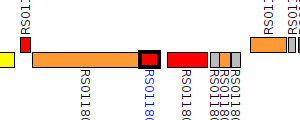
|
|
| Pseudomonas umsongensis 20MFCvi1.1 | D470_RS0109090 |
LuxR family transcriptional regulator
|
1 member |
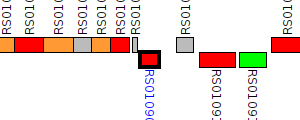
|
|
| Pseudomonas umsongensis UNC430CL58Col | N519_RS0108840 |
LuxR family transcriptional regulator
|
1 member |

|
|
| Pseudomonas veronii 1YdBTEX2 | H736_RS0101315 |
LuxR family transcriptional regulator
|
1 member |

|
|
| Pseudomonas veronii R4 | SU91_RS24735 |
LuxR family transcriptional regulator
|
1 member |

|
|
| Pseudomonas viridiflava LMCA8 | RT94_RS22235 |
transcriptional regulator
|
1 member |

|
|
| Pseudomonas vranovensis DSM 16006 | H621_RS0124380 |
LuxR family transcriptional regulator
|
1 member |

|
|
| Pseudomonas weihenstephanensis DSM 29166 | TU86_RS02365 |
LuxR family transcriptional regulator
|
1 member |

|